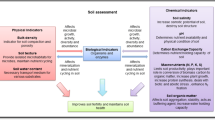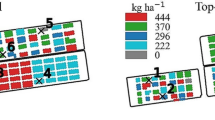Abstract
Determination of soaked california bearing ratio (CBR) and compaction characteristics of soils in the laboratory require considerable time and effort. To make a preliminary assessment of the suitability of soils required for a project, prediction models for these engineering properties on the basis of laboratory tests—which are quick to perform, less time consuming and cheap—such as the tests for index properties of soils, are preferable. Nevertheless researchers hold divergent views regarding the most influential parameters to be taken into account for prediction of soaked CBR and compaction characteristics of fine-grained soils. This could be due to the complex behaviour of soils—which, by their very nature, exhibit extreme variability. However this disagreement is a matter of concern as it affects the dependability of prediction models. This study therefore analyses the ability of artificial neural networks and multiple regression to handle different influential parameters simultaneously so as to make accurate predictions on soaked CBR and compaction characteristics of fine-grained soils. The results of simple regression analyses included in this study indicate that optimum moisture content (OMC) and maximum dry density (MDD) of fine-grained soils bear better correlation with soaked CBR of fine-grained soils than plastic limit and liquid limit. Simple regression analyses also indicate that plastic limit has stronger correlation with compaction characteristics of fine-grained soils than liquid limit. On the basis of these correlations obtained using simple regression analyses, neural network prediction models and multiple regression prediction models—with varying number of input parameters are developed. The results reveal that neural network models have more ability to utilize relatively less influential parameters than multiple regression models. The study establishes that in the case of neural network models, the relatively less powerful parameters—liquid limit and plastic limit can also be used effectively along with MDD and OMC for better prediction of soaked CBR of fine-grained soils. Also with the inclusion of less significant parameter—liquid limit along with plastic limit the predictions on compaction characteristics of fine-grained soils using neural network analysis improves considerably. Thus in the case of neural network analysis, the use of relatively less influential input parameters along with stronger parameters is definitely beneficial, unlike conventional statistical methods—for which, the consequence of this approach is unpredictable—giving sometimes not so favourable results. Very weak input parameters alone need to be avoided for neural network analysis. Consequently, when there is ambiguity regarding the most influential input parameters, neural network analysis is quite useful as all such influential parameters can be taken to consideration simultaneously, which will only improve the performance of neural network models. As soils by their very nature, exhibit extreme complexity, it is necessary to include maximum number of influential parameters—as can be determined easily using simple laboratory tests—in the prediction models for soil properties, so as to improve the reliability of these models—for which, use of neural networks is more desirable.






Similar content being viewed by others
References
Agarwal KB, Ghanekar KD (1970) Prediction of CBR from plasticity characteristics of soil. In: Proceedings of the 2nd south-east Asian conference on soil engineering, Singapore, pp 571–576
Amari SI, Murata N, Muller KR, Finke M, Yang HH (1997) Asympotic statistical theory of overtraining and cross-validation. IEEE Trans Neural Netw 8(5):985–996
Breiman L (1994) Comment on neural networks: a review from a statistical by B. Cheng and D. M. Titterington. Stat Sci 9(1):38–42
Chester DL (1990) Why two hidden layers are better than one. Internat Joint Con Neural Netw 1:265–268
Datta T, Chattopadhyay BC (2011) Correlation between CBR and index properties of soil. In: Proceedings of Indian Geotechnical Conference, Kochi
Flood I (1991) A Gaussian-based neural network architecture and complementary training algorithm. In: Proceedings of the International Joint Conference on Neural Networks, New York, pp 171–176
Flood I, Kartam N (1994) Neural networks in civil engineering I: principles and understanding. J Comput Civil Eng 8(2):131–148
Hassoun MH (1995) Fundamentals of artificial neural networks. MIT Press, Cambridge
Hecht-Nielsen R (1989) Theory of the back-propagation neural network. In: Proceedings of the International Joint Conference on Neural Networks, Washington, DC, pp 593–605
Karsoliya S (2012) Approximating number of hidden layer neurons in multiple hidden layer BPNN Architecture. Internat J Eng Trends Technol 3(6):714–717
Lapedes A and Farber R (1988) How neural networks work. Neural information processing systems. American Institute of Physics, College Park, pp 442–456
Masters T (1993) Practical neural network recipes in C++. Academic Press, San Diego
Pandian NS, Nagaraj TS, Manoj M (1997) Re-examination of compaction characteristics of fine-grained soils. Geotechnique 47(2):363–366
Patel RS, Desai MD (2010) CBR Predicted by index properties of soil for alluvial soils of South Gujarat, Indian Geotechnical Conference, Proc. IGC I: 79–82
Ripley BD (1996) Pattern recognition and neural networks. Cambridge University Press, Cambridge
Roy TK, Chattopadhyay BC (2006) Prediction of compaction characteristics of subgrade materials for the road. Proc Indian geotech conf Chennai 2:737–740
Roy TK, Chattopadhyay BC, Roy SK (2007) Prediction of CBR for subgrade of different materials from simple test, Proceedings of the International conference on civil engineering in the new millennium—opportunities and challenges—Kolkata
Roy TK, Chattopadhyay BC, Roy SK (2009) Prediction of CBR from compaction characteristics of cohesive soil. Highw Res J 77–88
Rumelhart DE, Hinton GE, Williams RJ (1986) Learning internal representation by error propagation. Parallel distributed processing. MIT Press, Cambridge
Sarle WS (1994) Neural networks and statistical models. In: Proceedings of the 19th Annual SAS Users Group International Conference, Cary, NC: SAS Institute, pp 1538–1550
Sarle WS (1995) Stopped training and other remedies for overfitting. In: Proceedings of the 27th Symposium on the Interface of Computing Science and Statistics, pp 352–360
Shahin MA, Jaksa MB, Maier HR (2008) State of the art of artificial neural networks in geotechnical Engineering. EJGE paper
Smith GN (1986) Probability and statistics in civil engineering: an introduction. Collins London
Smith M (1993) Neural networks for statistical modeling. Van Nostrand Reinhold, New York
Sridharan A, Nagaraj HB (2005) Plastic limit and compaction characteristics of fine-grained soils. Ground Improvement 9:17–22
Tang Z, Almeida C, Fishwick PA (1991) Time series forecasting using neural networks versus Box-Jenkins methodology. Simulation 57(5):303–310
Taylor B, Darrah M, Moats C (2003) Verification and validation of neural networks: a sampling of research in progress. Proceedings of SPIE 5103:8–16
Willmott CJ, Matsuura K (2005) Advantages of the mean absolute error (MAE) over the root mean square error (RMSE) in assessing average model performance. Clim Res 30:79–82
Author information
Authors and Affiliations
Corresponding author
Rights and permissions
About this article
Cite this article
Varghese, V.K., Babu, S.S., Bijukumar, R. et al. Artificial Neural Networks: A Solution to the Ambiguity in Prediction of Engineering Properties of Fine-Grained Soils. Geotech Geol Eng 31, 1187–1205 (2013). https://doi.org/10.1007/s10706-013-9643-5
Received:
Accepted:
Published:
Issue Date:
DOI: https://doi.org/10.1007/s10706-013-9643-5




